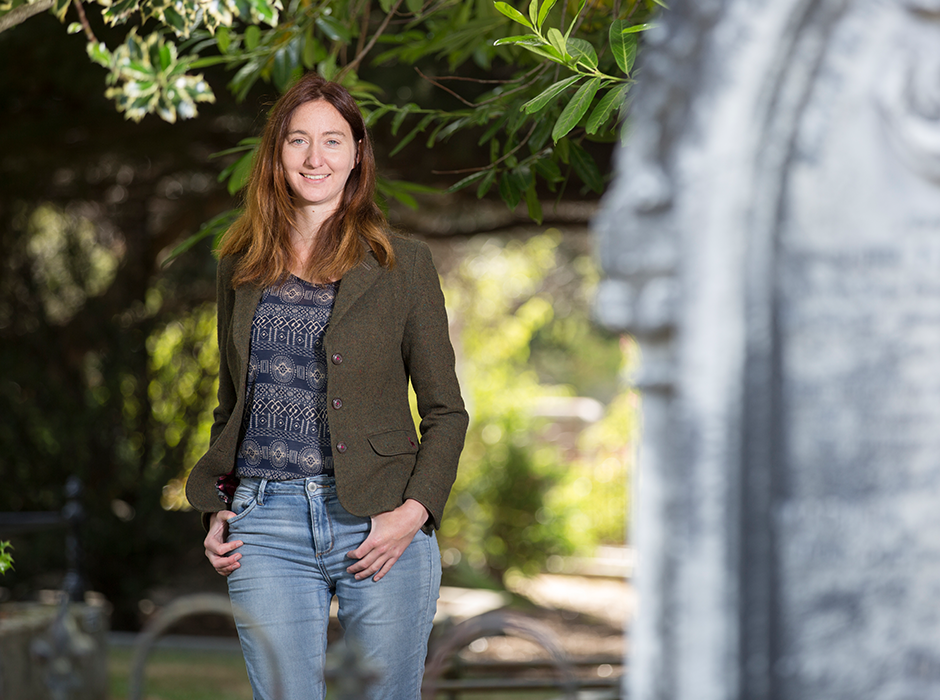
Data from isotope analysis of remains of miners highlights the “diverse life experiences of people on the Otago goldfields” says Dr Charlotte King.
Findings from the skeletal remains of miners laid to rest in Otago cemeteries in the 19th century are challenging some long held beliefs about life on the goldfields.
Led by the University of Otago’s Dr Charlotte King, of the Department of Anatomy, researchers used isotopic evidence from hair and teeth to determine what type of food the settlers ate during different stages of their lives, from how long someone was breastfed as in infant to dietary changes in the final months of their lives.
The article published in the Journal of Archaeological Science, concentrates on the remains of 18 individuals buried in cemeteries in Lawrence and Cromwell. The have been identified as the remains of nine European males, and one female, and eight Chinese males.
The research was derived as part of the Southern Cemeteries Archaeological Project led by Professor Hallie Buckley and Dr Peter Petchey. The remains of 34 unknown settlers were uncovered during excavations in 2018 and 2019 from Lawrence’s Ardrossan St and Gabriel Street Cemeteries. The remains were laid to rest again earlier this year.
Dr King says while most of the individuals were only represented by teeth and/or hair due to the acidic ground water flow damaging the integrity of the bones, that is enough to tell a lot about their lives.
“The body makes its tissues - bones, teeth, hair, soft tissue - using the building blocks from the food put into it. That means there are chemical signals that are transferred from that food into the body's tissues when they form, and different tissues form at different times.
“Teeth form in childhood, and do not change throughout a person’s life, so by analysing their chemistry we can look at the diet in childhood, while by looking at hair on a centimetre-by-centimetre scale we can look at diet month-by-month leading up to time of death.
“These are 34 people who we now have life stories for that we didn’t before.”
One of the more surprising findings was that Chinese settlers, who were known to be shunned by European settlers, appear to have been better off when it came to diet.
“The Chinese were definitely marginalised by the Europeans on the goldfields at the time, there are lots of newspaper articles from the period complaining about their presence, and at Lawrence the Chinese miners weren't allowed to live inside the European township, they had their own camp out of town,” Dr King says.
Researchers expected this would result in the Chinese not having as good access to food, and particularly high quality foods like meat.
“Instead it is possible that the emphasis the Chinese had on community afforded them better collective access to meat because what we see isotopically is that they appeared to have more meat or fish in their diet than the European miners.
“We know that there was a really strong community of Chinese miners at Lawrence an expectation that newcomers would be cared for, and a communal pig oven for food sharing. We also know that Chinese stores on the goldfields had their own supply chains and were popular even with the European miners,” she says.
The findings fit with what was already known through historical records and oral history – the Chinese merchants had good imported supplies of dried foods – including dried fish, dried flavoured meats of pork and duck, dried vegetables and dried salted plums. Unlike the Europeans, the Chinese did not have a great fondness for sheep meat and instead ate hens, birds and rabbits.
Also notable in the latest results was that many settlers in the sample experienced “late weaning” – more than three years of age. It was particularly true of the Chinese, some of whom seem not have been fully weaned until they were aged four or five.
“There is some evidence that breastfeeding until later was considered the ideal in Qing dynasty China, increasing both the health of the infant and the likelihood of long inter-birth intervals,” Dr King says.
While all 18 individuals had a diet involving staple crops and vegetables, some appeared to have had more access to meat and/or fish.
One Chinese settler’s remains showed dramatic changes in isotopic values about ten months before they died, most notably decreased consumption of fish and meat.
“It is possible that this dietary change is associated with movement between areas of differing ecology or resource availability - maybe it reflects the timing of arriving on the Otago goldfields. Alternatively it may simply reflect a sudden lack of availability of certain resources on the goldfield,” she says.
Meanwhile a female European’s long hair revealed insight into “potential stress episodes”.
“Dramatic spikes across a 16-month period may be suggestive of sporadic meat shortages, short-lived periods where she ate lots of fish, acute periods of nutritional stress, or even stresses associated with pregnancy and lactation.”
Other analyses showed she had toxic levels of mercury in their hair, likely used for medicinal purposes.
“Regardless of the cause, their isotopic variability suggests that their life close to death was tumultuous, involving frequent changes to diet and health status,” Dr King says.
The research highlights the “diverse life experiences of people on the goldfields”, she says.
“I think one of the most important things this does is help us to see history as made up of real people and their lives, not just boring dates and facts. Every person on the goldfields had their own story, their own set of reasons for being there, and this helps us to bring them to life.”